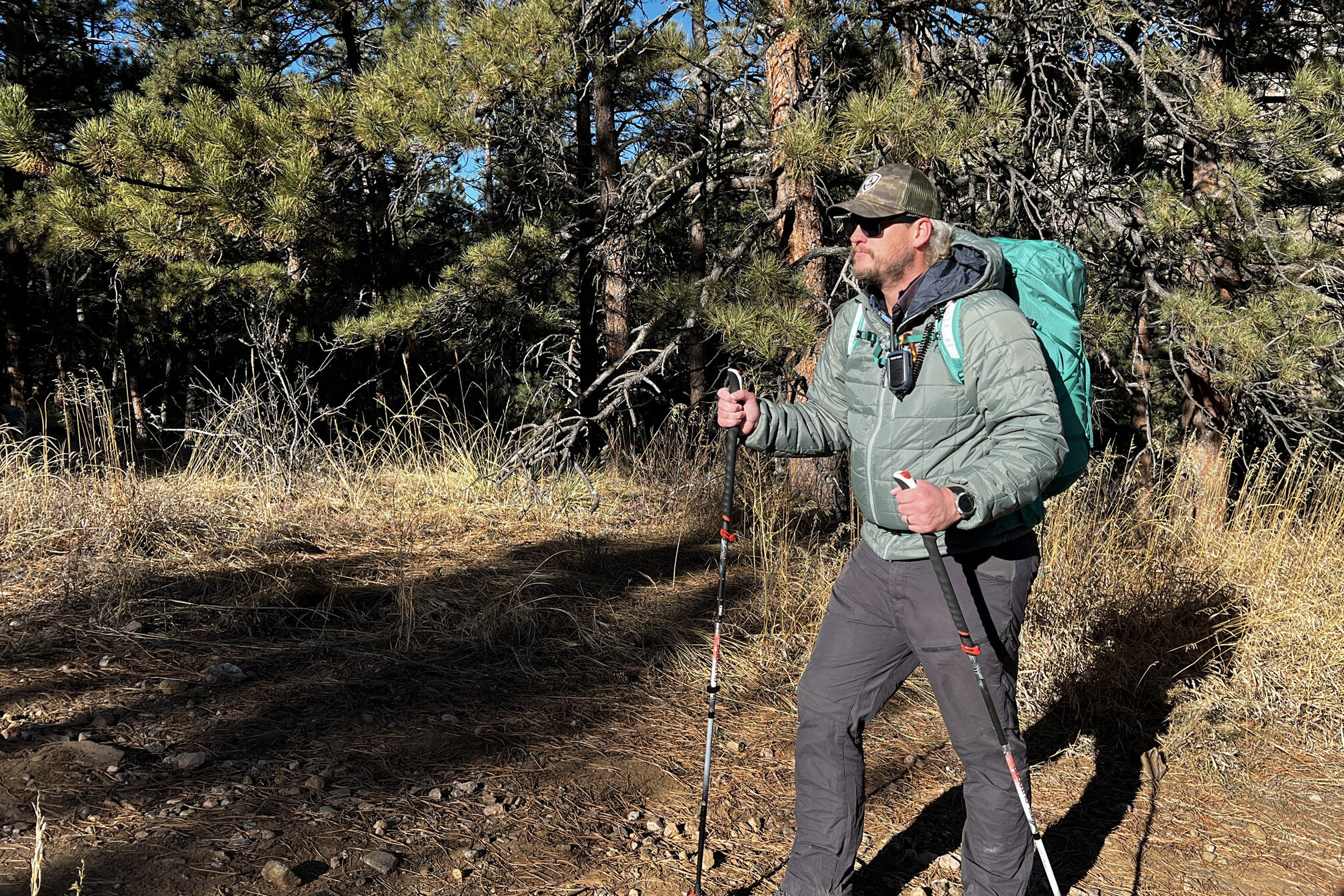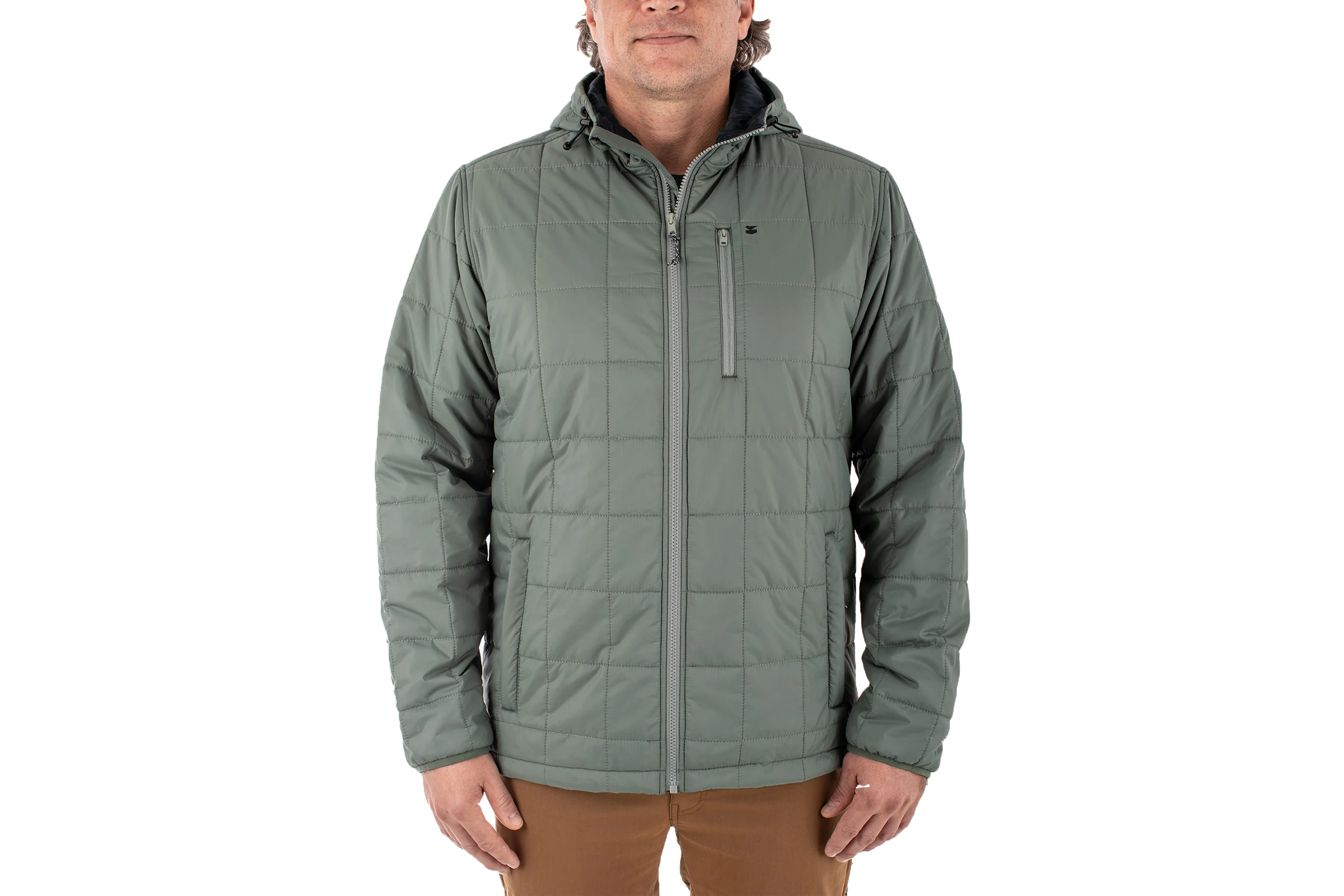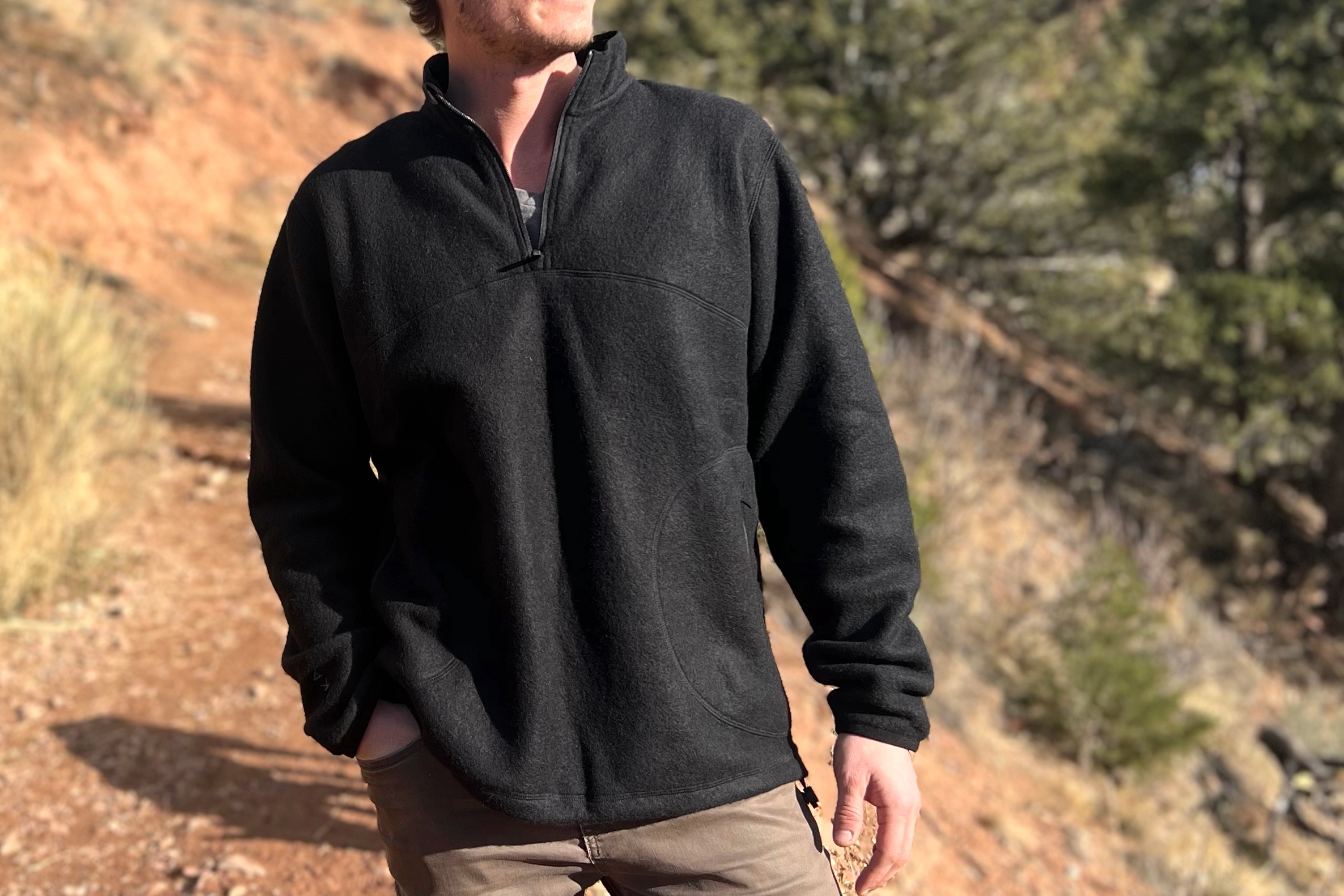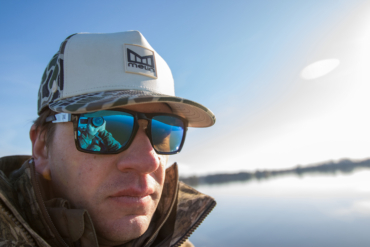I thought I had tried every form of natural-based insulation out there. That was until I learned about Jetty and its blended insulation made from oyster shells.
The innovative material is called Oystex and is a mix of crushed oyster shells and recycled plastics. It’s different than traditional down and synthetic insulation, and yet in the past month of testing, I can definitively say it is very warm in cold conditions. While a calcium-carbonate shell may not sound like the best material to insulate a puffy jacket with, I think Jetty is on to something with this new material.
After testing the Jetty Puffer Oystex Jacket in the frigid Colorado Rockies, it managed to keep me toasty warm without requiring a huge carbon footprint to make — a win-win. While the jury is still out on how the Jetty Puffer Oystex material will hold up over time, it performed well during the past month of testing. It hasn’t exhibited the problems that often plague other naturally sourced materials.
In short: The Jetty Puffer Jacket ($140) is made from recycled oyster shells and polyester, creating an eco-friendly natural insulation material called Oystex. The fall 2023 Puffer Jacket that I tested is filled with 150 GSM Oystex fill, which is allegedly equivalent to 600-fill down. The jacket kept me warm on winter hikes as well as during an NFL football game in 30- to 40-degree temperatures. It’s on the heavier side for an insulated jacket. And I don’t think Oystex will ever outright replace down. But it’s warm and offers an eco-friendly alternative to synthetic insulation.
If you’re shopping for insulated jackets, compare this one to GearJunkie’s Best Synthetic Insulated Jackets and Best Down Jackets.
- Size: XXL
- Shell: 100% Recycled polyester
- Fill: 50 GSM Oystex Fill
- Weight: 22 oz.
- Hooded zip-up:
- Chest pocket:
- Hand pockets:
- Packs into pocket:
Jetty Puffer Jacket Review
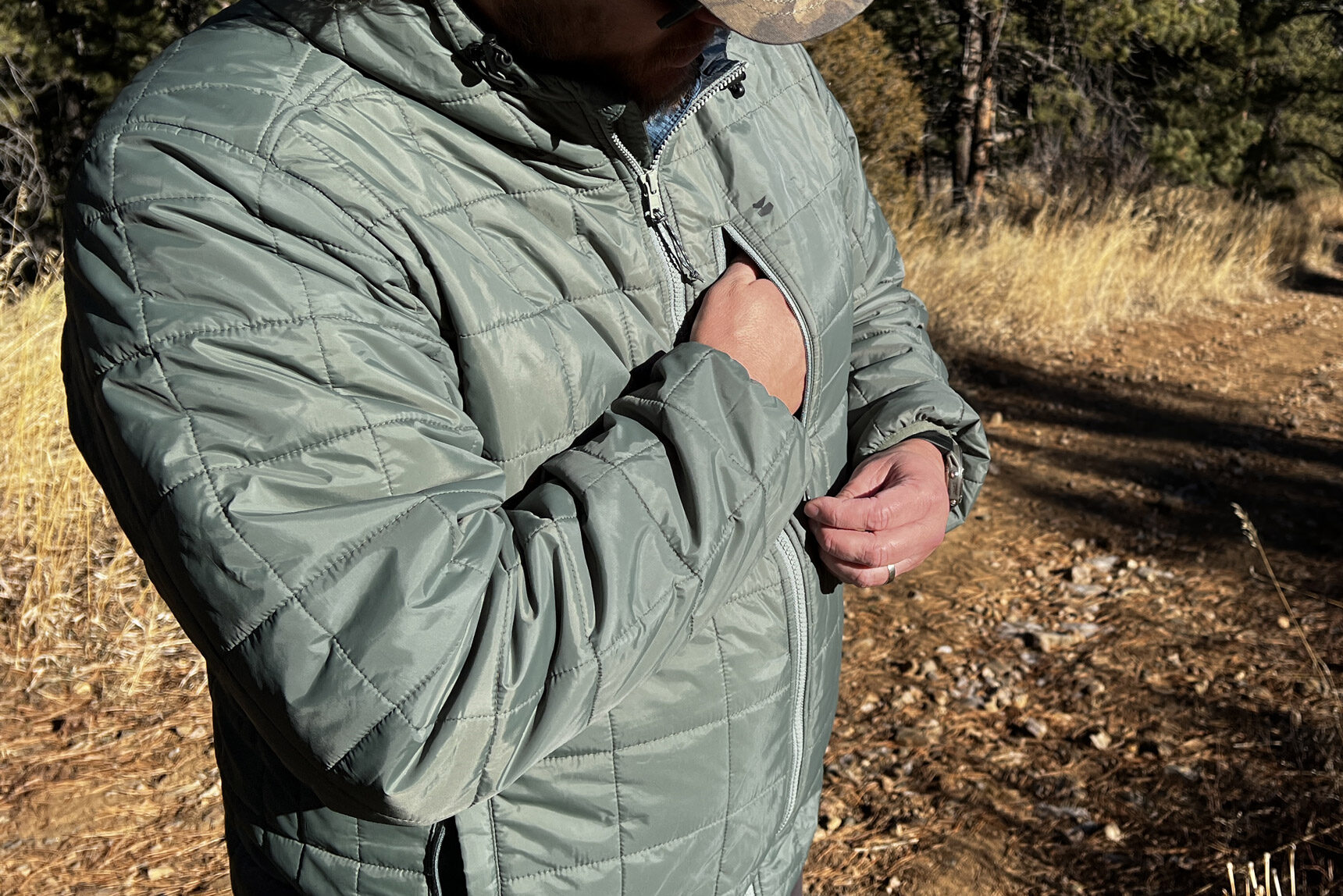
Oystex Technology
So, what exactly is Oystex? According to Jetty, the 100% recycled polyester and 150 GSM Oystex Fill is an eco-friendly blend of calcium carbonate and recycled polyester — it compares it to 600-fill down. The eco-friendly mix is supposed to be soft and breathable and doesn’t sacrifice flexibility or durability.
GSM stands for “grams per square meter” and is a common way of rating the weight of a puffer jacket fabric. At 150 GSM and 22 ounces, the Puffer Jacket is significantly heavier than most of those on GearJunkie’s Best Synthetic Insulated Jackets and many of the Best Down Jackets. Jetty rates the Puffer for temperatures ranging from 30 degrees to 40 degrees.
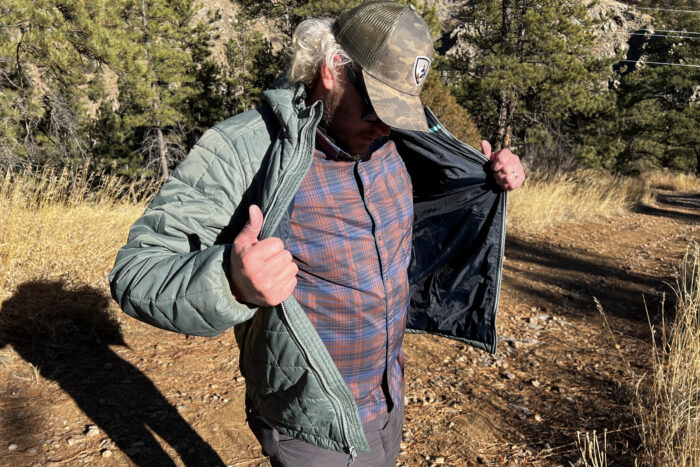
Creating Oystex is a four-phase process composed of reclaiming the oyster shells and then pulverizing them into a calcium carbonate powder. Then the oyster — or Oystex powder — is mixed with recycled plastic which is molded into small pellets, melted, strung into yarn, and filled into the jacket.
According to Jetty, the benefits of Oystex insulation are its breathability, quick-dry, anti-odor, anti-static, and natural eco-friendly attributes. Performance-wise, it’s similar to synthetic insulation like PrimaLoft but it leaves behind a much smaller carbon footprint across its lifecycle.
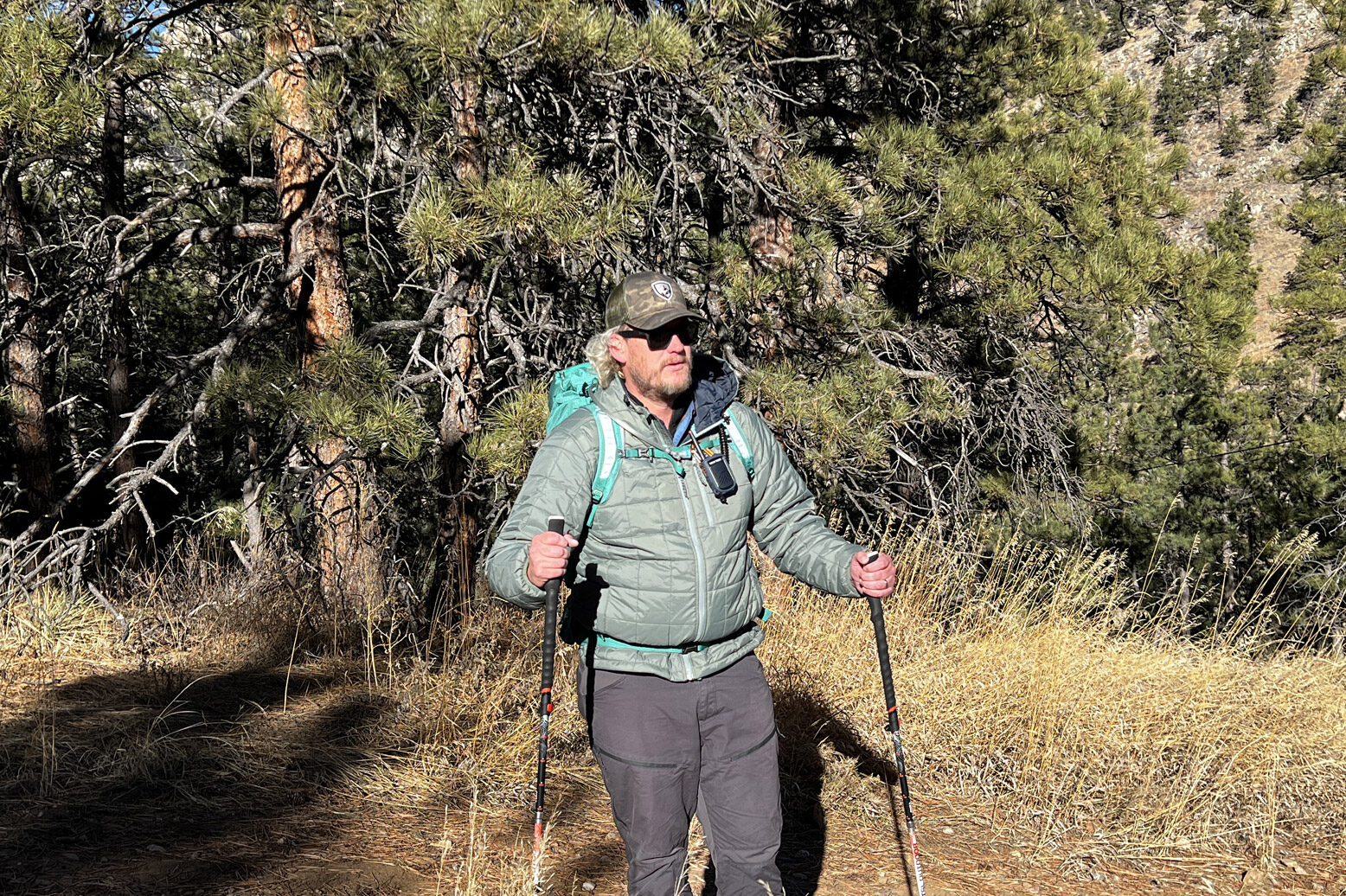
Jetty Puffer Jacket: Impressions
In the Wild
The Jetty Puffer performed well outdoors during testing. It is heavier than most synthetic or down-insulated jackets, but also surprisingly warm for a naturally based material. It has plenty of pocket storage and packs into one of its own pockets, creating a little pillow.
When I tested the jacket on a sunny but cold hike just outside of Rocky Mountain National Park, I overheated pretty quickly in it. While hiking uphill in 40-degree temperatures, the insulation was great in the shade. But it became too much once I was in the sunshine.
When I shed the jacket, it folded up and fit in my pack easily. The size and weight were pretty much imperceptible in my pack.
The Puffer is not waterproof. But in my experience, it does dry quickly and does not hold an odor thanks to the natural materials used.

At the Stadium
On another test, I wore the Jetty Puffer to a New Year’s Eve Denver Broncos football game where the temperatures fluctuated around 30 degrees. I did wear a layer under the jacket, and it kept me warm while sitting in the stands for several hours.
However, it did not stand up to the wind. A cold breeze would cut right through this jacket. Despite its oyster makeup, the Puffer is certainly no shell. In rain or wind, it would work best as a midlayer under something more weather-resistant.
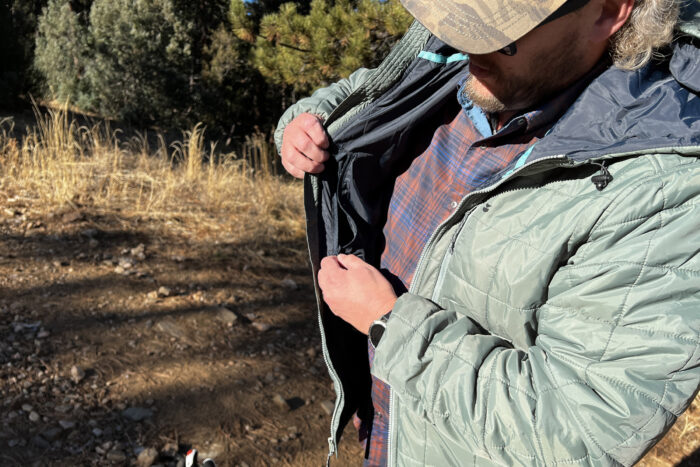
On the Streets
I’ve also just been wearing the Jetty Puffer around town this winter. From the grocery store to the gym, it makes for a great daily insulated jacket that keeps me very warm. The hood is great to have for additional coverage, and the chest pocket is nice for a phone or wallet.
For the day-to-day, the Puffer is a solid, eco-friendly go-to jacket.
Room for Improvement
The only drawbacks to me, are this jacket’s fit and the feel of the material. It’s loose-fitting with more of a lifestyle cut than a performance fit. I don’t know that it would be my go-to puffer for high-activity endeavors like ski touring or trail running.
The material also has a slick sheen and a feel I’m not totally in love with. It’s not negative, but I figure it’s worth noting.
The hood’s cinch is also right in front of your face when you zip the jacket up. At times, that annoyed me but was never a deal-breaking bother.
There’s also the question of how Oystex insulation will hold up over years of use. In my limited time testing it and being relatively rough on the jacket, it stood up to daily demands without issue. However, in the long term, we’ll see how well Oystex retains its loft and insulative qualities. The faster an insulation packs down, the faster it stops being warm — but I haven’t had this jacket long enough to make a judgment there.
Jetty Puffer Jacket: Conclusion
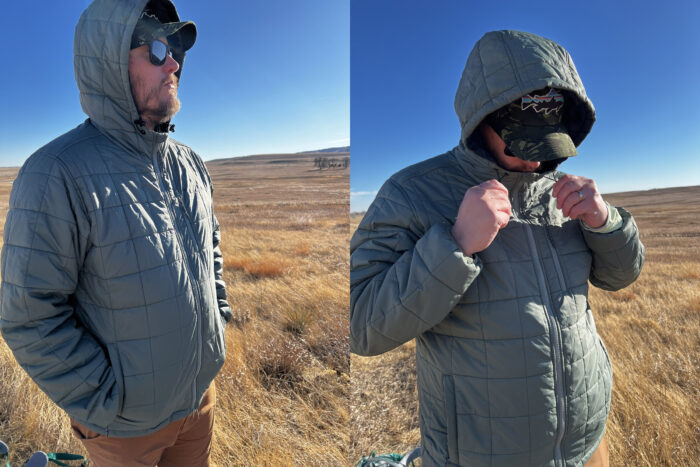
The Jetty Puffer Jacket delivers on all fronts. It provided what I needed from a puffy jacket in the winter. It is warm, fairly lightweight, and comfortable. Oystex might not ever fully replace down or synthetic insulation. But it’s a solid eco-friendly alternative.
Compared to the Mountain Hardwear StretchDown Light Pullover, another favorite of mine this time of year, it is comparable in the warmth department. The Strechdown is a pullover with a 20-denier durable stretch Doubleweave. It is more matted in appearance and much more form-fitting compared to the Jetty Puffer. By contrast, this is a full-zip jacket that hangs looser and baggier on me.
Of course, the Jetty Puffer jacket is also made with eco-friendly pulverized oyster shells. And perhaps the best part about the Oystex insulated Puffer Jacket is that does not cost an arm and a leg. Normal retail on the Jetty Puffer is $140 — but at the moment it’s on sale for just $84. For a puffer jacket with the equivalent of a 600 down fill rating, that’s a steal.
I would recommend this jacket for a lifestyle puffer around town or low-key hikes and walks in the winter. Early morning on the beach, as Jetty recommends, would also be perfect for this coat. With that oyster-based natural insulation, I’m sure it would feel right at home near the ocean.
